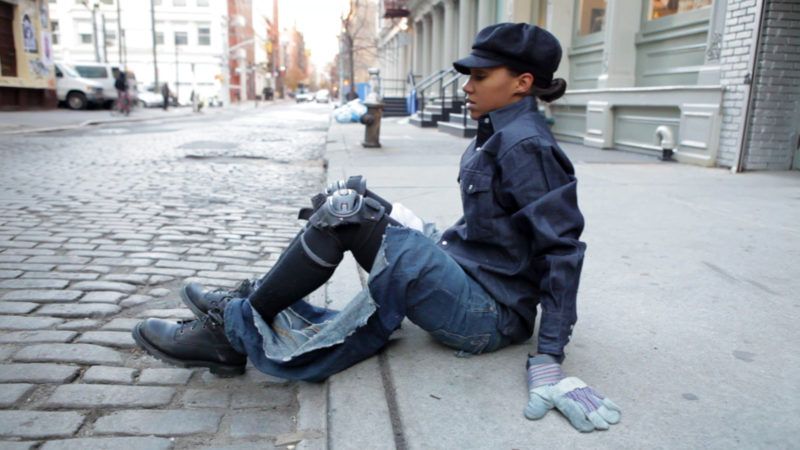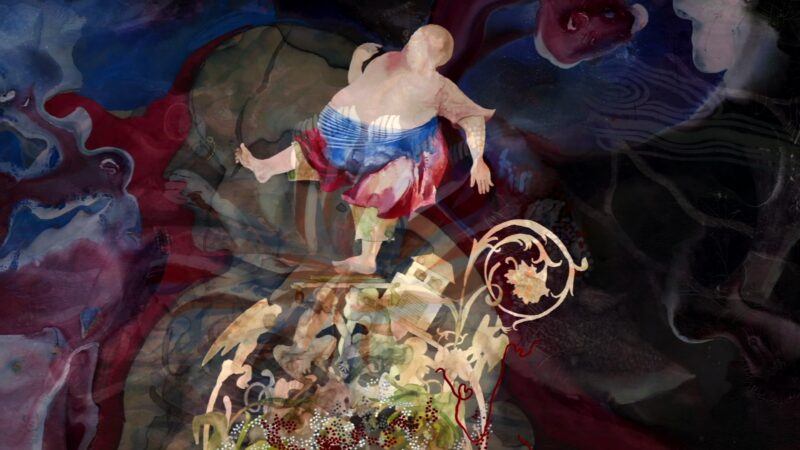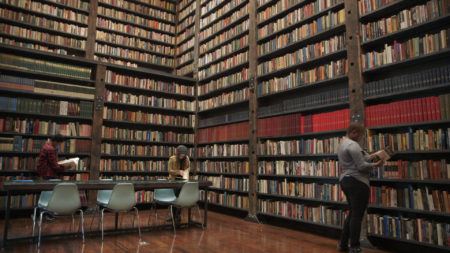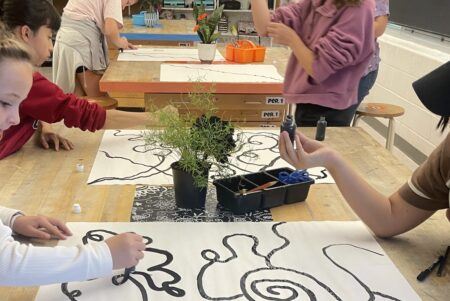Teaching with Contemporary Art
Teaching with Global/Local Connections

IMAGE: Production still from the Art in the Twenty-First Century Season 7 episode “Investigation.” © Art21, Inc. 2014.
How do we bridge the time and distance between some of the places beyond our own immediate region—beyond our own knowledge, lives, and experiences? How can we find connections to the urban toxicity, the pollution of rivers and streams, and the stories of community resilience?
This playlist shapes the contours of a range of questions about the world and ‘International Community-ism.’ It comes from my interest in connecting the global with the local, and I can use these videos to introduce global studies content in my classroom. These videos offer a range of possibilities for unpacking intersections of aesthetics and ecologies in multiple localities.

IMAGE: Production still from the New York Close Up film “LaToya Ruby Frazier Takes on Levi’s.” © Art21, Inc. 2011.
We watch artist LaToya Ruby Frazier critique how the multinational corporation, Levi’s, commodifies working-class America and exploits the residents of Braddock, Pennsylvania. She says, “It came natural for me to tear a pair of Levi’s jeans as a political gesture and testament for the men and women whose views counter such a fictitious, superficial, propagandized ad campaign.” Frazier’s performance is a powerful resistance to erasure of the economic and familial histories, slow violence, and community resilience.

IMAGE: Mel Chin. “Revival Field,” 1991. Pig’s Eye Landfill, St. Paul, Minnesota. Photo documentation of the first harvest on a State Priority Superfund Site. Courtesy of the artist.
This story is paired with Mel Chin as we hear him talk about the iconic project Revival Field and the “poetry” of using hyperaccumulator plants to “sculpt the ecology” of a Superfund site uptaking heavy metals from contaminated soils. The initial work in 1991 is located at Pig’s Eye Landfill, a State Superfund site in St. Paul, Minnesota. It’s also cool to see student activists of all ages from George Jackson Academy working together to call attention to the danger of childhood lead poisoning as part of the ongoing Fundred Dollar Bill project.

IMAGE: Shahzia Sikander, “The Last Post,” 2010. HD video animation stills. Courtesy of the artist and Sikkema Jenkins & Co., New York.
We then join these stories with the words of Shahzia Sikander describing her piece The Last Post, which explores cultural and political boundaries through counter-narratives, using her stylized language of non-linearity and layers that seem to embody her multiple identities. Sikander also relies on symbols of extraction, trade, and colonial histories, and the work becomes a challenge to patriarchal structures. We talk a little about how the movement of ink in her work mimics the movement of oil across the world, a frequent theme in Sikander’s art.
And finally, there is Liu Xiaodong’s brushstrokes materializing into portraits of everyday folks in Eagle Pass, Texas. We talk about Liu Xiaodong’s awareness of where he comes from as he paints “places that can’t be easily judged by a single value system.” I’m inspired by his invitation to witness and “go through life together.”
Watch Amiko’s playlist “Teaching with Global/Local Connections.”



